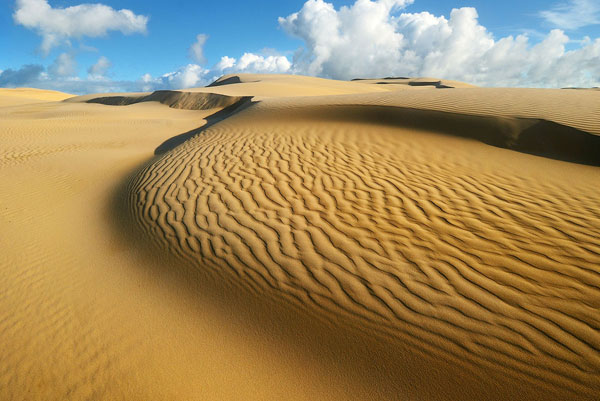Desert landscape photography guide: Tips for capturing compelling shots in deserts
posted Thursday, March 28, 2019 at 9:00 AM EDT

Here at Imaging Resource, we have featured numerous photography guides from photographer Anton Gorlin, including tips for better sunrise photography, a guide to seascape photography and a lengthy guide covering composition. Gorlin's latest photography guide is centered around desert landscape photography. Of desert landscapes, Gorlin says, "[it] is one of my favorite environments for landscape photography. I love it just as much as seascape photography. Unlike popular opinion, the desert is full of life and stories. Of course, as any sub-genre of photography, it has its nuances and approaches to make it work."
Gorlin's desert landscape guide is broken up into 10 sections, including discussions about preparation, gear and lenses and more artistic advice about finding subjects, telling a compelling story and finding the right light for your image. Much like seascapes, not all deserts are the same. Some are very sandy and feature dune after dune. Others are rocky and some are even icy. What they have in common is that they see very little annual precipitation and consequently life is much more sparse. Given the harsh environment, there are some safety concerns which are particularly important when on a desert photo trip. For example, the temperatures in Death Valley, California can reach temperatures exceeding 130 degrees Fahrenheit. This not only places stress on your photo gear, but can be fatal if you are not adequately prepared. The life found in deserts is often quite different from what you'd find elsewhere, and some of it is dangerous, so take necessary precautions for this reality as well.

Regarding your photo gear, the desert is a particularly difficult environment. You will want to bring an air blower because sand has a nasty habit of finding its way onto gear, inside tripod joints and in backpacks. A brush can also be useful to bring, as it can brush sand off sensitive areas of your camera, such as your lens mount. Speaking of lenses, Gorlin highly recommends a flexible zoom lens for desert photography as subjects can vary from requiring a wide-angle lens to needing telephoto focal lengths. Gorlin shoots on full-frame and opts for 15-30mm, 50mm and 70-300mm lenses, with the latter sometimes not offering enough reach.
What will you be shooting in the desert? "Simplicity is the key to success," says Gorlin. Patterns in the sand, dunes being touched by beautiful golden hour light, dead trees, vegetation following a rare rain, patterns of light and shadows on sand and dunes, abstract geometric shapes and more are all potential subjects. By utilizing death, such as bones or dead trees, and/or life, like animal tracks, wildflowers or desert wildlife, you can tell many different compelling stories. Another type of photography in the desert to consider is astrophotography. After all, deserts are often quite far from civilization, meaning skies will be very dark.

For much more information on desert landscape photography and many great tips, head to Anton Gorlin's full post.
(Via Anton Gorlin)